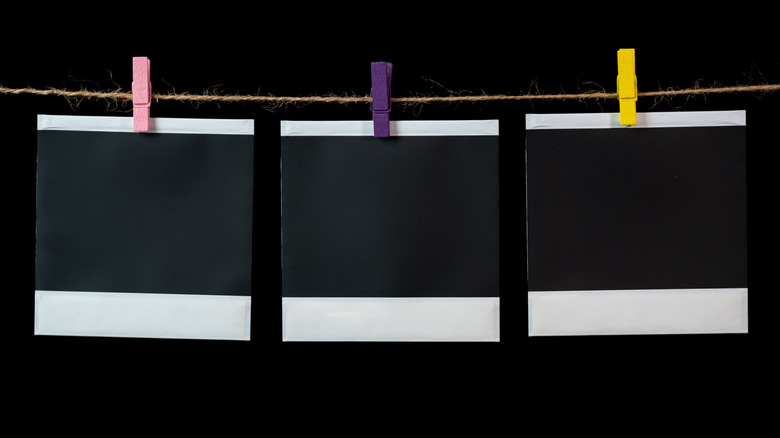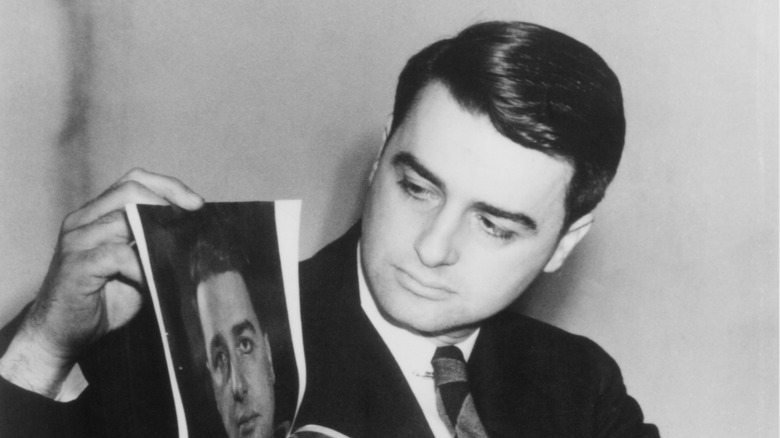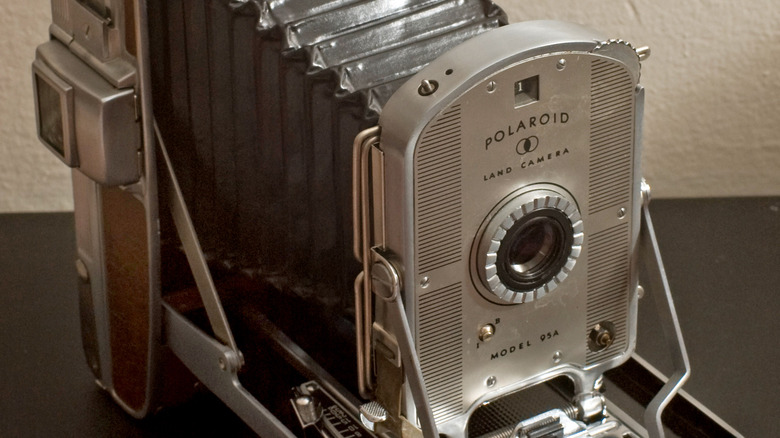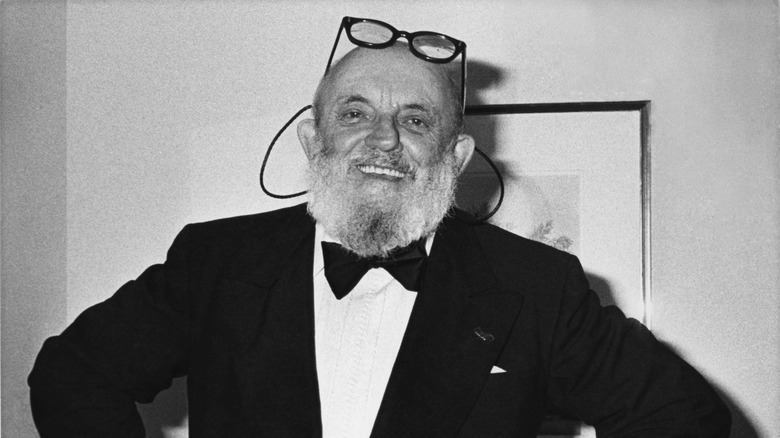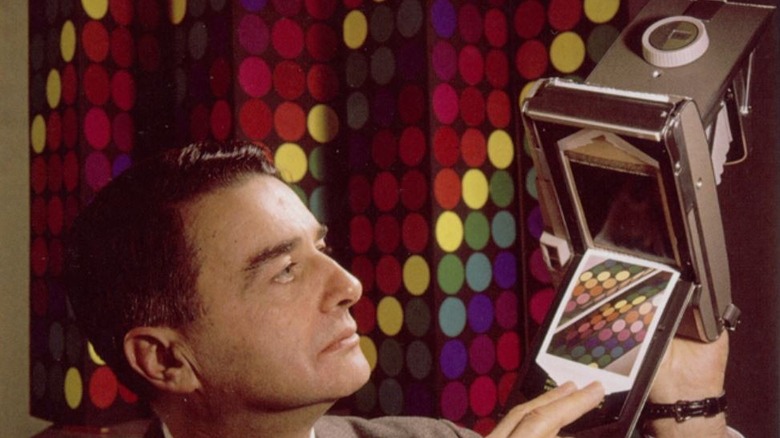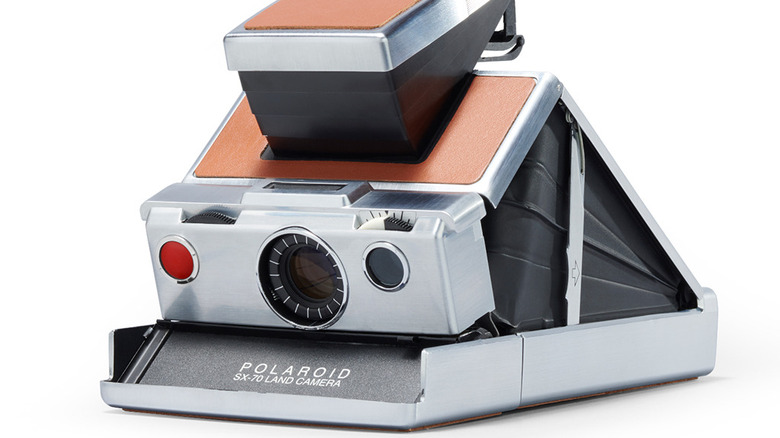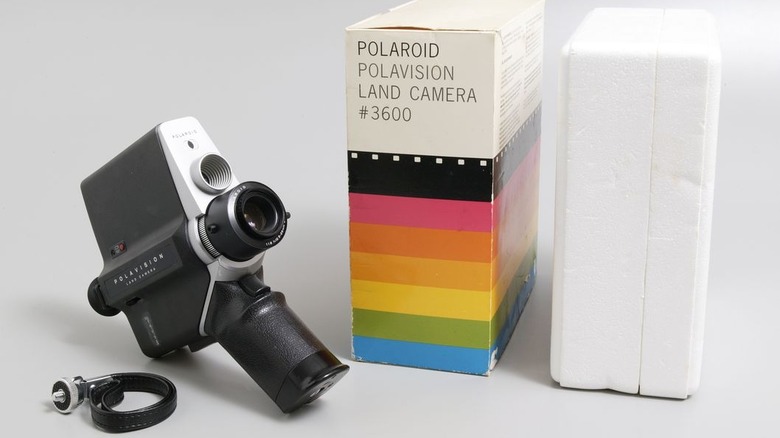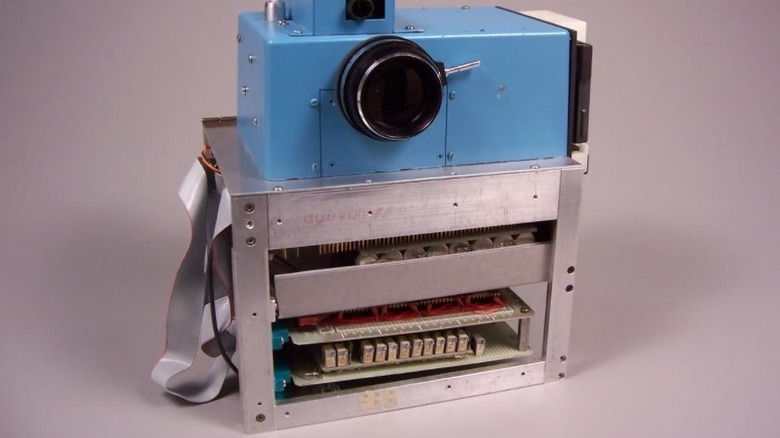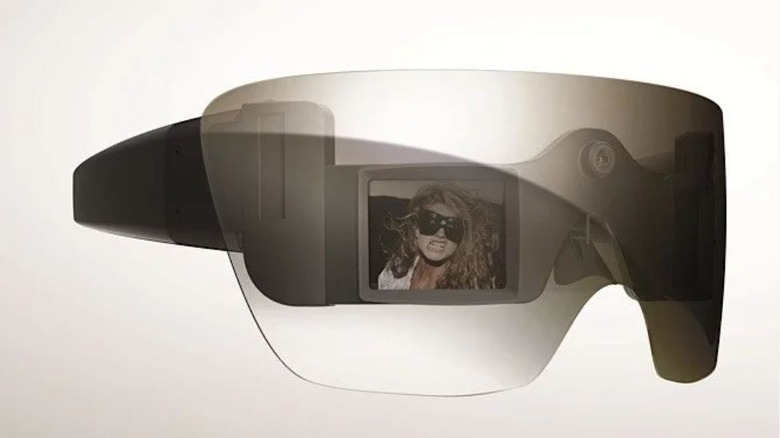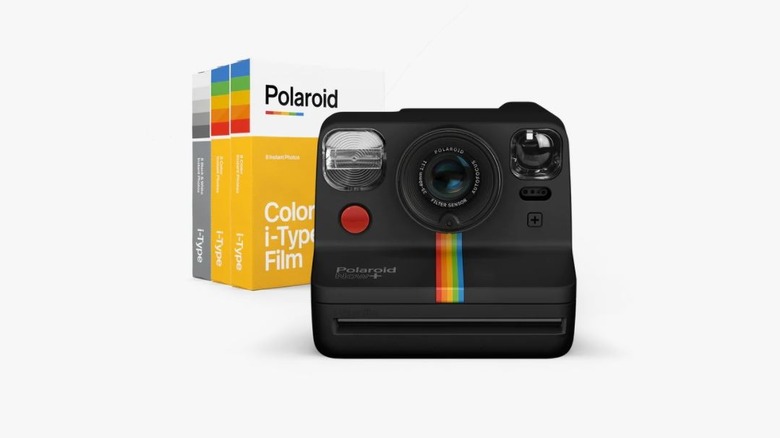The Fascinating History Of Polaroid Cameras
The story of Polaroid's instant photography begins almost a hundred years ago with an offhand comment from a child, and it extends into today. Photography has gone through myriad iterations since the very earliest photos were captured. Today, advanced cameras are everywhere. We carry them in our pockets, mount them outside buildings and on street corners. We even put them on vehicles and telescopes and blast them off into space.
The Polaroid company and the cameras for which it became so famous played an integral part in the evolution of photography during the twentieth century and earned their place as a branch which has become synonymous with the thing they made.
With the invention of the Polaroid camera, for the first time in history, the average person could take a photo and hold the result in their hand almost instantaneously. No longer were consumers forced to ship their film away for development or spend hours in a dark room, shrouded in red light and elbow deep in chemicals.
Polaroid cameras and other instant cameras have enjoyed something of a resurgence in recent years as nostalgia for antiquated tech continues to boom. Yet, we wouldn't even have the opportunity to revisit the hallowed technology of yesteryear if it weren't invented in the first place.
Edwin Land and the beginning of Polaroid
You may not have ever heard of Edwin Land but for a few decades you couldn't talk about photography without his name coming up. Land was a prolific inventor, acquiring over 500 patents during his life, leaving him only a couple of spots below Thomas Edison on the American inventing scoreboard.
Land didn't begin his life focused on photography, but he was interested in light and the ways he could manipulate it through engineering. His first obsession manifested when he was only thirteen years old and began playing with the idea of polarizing materials for reducing glare from lights (via ACS). By the 1930s he had succeeded in creating synthetic polarized materials for the commercial market.
Shortly thereafter, in 1932, Land partnered with George Wheelright and created the Land-Wheelright labs to manufacture his polarizers, (via Britannica). Among their first uses were as filters for existing cameras, glare-free sunglasses, and early 3D images. Land called the material Polaroid, taken from their function and in 1937 the company he and Wheelright started incorporated under that name.
For a while, the company maintained its work on polarizers and their uses both for military purposes and early 3D movies. Before long, however, Land's focus would shift.
Land's daughter asks to see a picture
During a family trip in 1943, Land was carrying a camera and snapping pictures of his three-year-old daughter, Jennifer. After a particular photo, Jennifer asked her father if she could see the image to make sure she liked it (per History Daily). Land explained the lengthy and laborious process of sending the film away to a lab for it to be developed and prints of the photos returned to them. It would be days or weeks before they would get the images of their trip.
Another parent might have dismissed the idea of their child as a flight of fancy, the uneducated ramblings of the youthfully innocent, but not Lam. He took the request to heart and that innocent question sparked an idea in Land's mind. He wondered if it were possible to create a camera that developed the film internally and spit out a finished photograph nearly instantly. Land set to work building what was essentially a darkroom in a box and, within a few years, Polaroid released the first instant camera.
The first Polaroid camera
When the first instant camera was unveiled to the world, it wasn't called a Polaroid. The Land Camera, named for its inventor, was first demonstrated at a meeting of the Optical Society of America in February of 1947 (via EDN).
A year later the camera was on sale to the public, just in time for Christmas 1948. A small initial run of only 50 cameras was produced and stocked at the Jordan Marsh department store in Boston. Despite having a relatively high price tag of about $90, every one of those cameras sold on the first day (via the Photographic Society of Northwest Arkansas).
Polaroid's first instant camera, the Land Camera Model 95, held two sheets of photo paper at opposite ends of the interior camera body. An exterior knob turned a pair of interior rollers which pushed the sheets together before expelling them from the camera. As the sheets pressed together, development chemicals were pressed between the layers.
Those chemicals took about a minute to develop the photo before the layers could be peeled apart and the image revealed. A minute might feel like a long time to wait for what is ostensibly an instant photo but it was orders of magnitude faster than the existing photo development infrastructure at the time.
The Polaroid Artist's Collection
Land was truly a renaissance man in the mid-twentieth century. He understood the intersection between technology and art, especially where photography was concerned. With that in mind, nearly from the birth of the instant camera, he partnered with a number of famous artists and photographers including Ansel Adams (via the Harvard Library).
Polaroid provided artists with free cameras and film in exchange for feedback and, if the artists were so inclined, some of the photos they took. It turns out they were inclined, and Polaroid's collection of photographic artworks eventually numbered in the thousands.
Adams maintained his relationship with Land and Polaroid until his death, sending back test photographs and detailed feedback which land used to refine the cameras. By then Polaroid had snapped up other artists and grew their collection of art to more than 16,000 photographs. When the company eventually fell on hard times, the collection was broken up and portions of it were auctioned off by Sotheby's as part of bankruptcy proceedings to pay off outstanding debts. Individual photos brought in tens of thousands of dollars and by the time the auction was done, Sotheby's had brought in approximately $12 million (per NPR).
Polaroid's first color film
The very first color images ever made by a camera were achieved using three exposures taken through blue, green, and red filters. When Polaroid set out to create their first instant color film, they built on that established tradition.
In 1963, Polaroid introduced Polacolor film, which allowed instant camera owners to take color photos for the first time (via Serbia Photo). The overall mechanics were similar to previous cameras, spreading reagent between two layers of photo paper by running them between rollers inside the camera.
What made Polacolor different way the negative photo paper was designed. Instead of a single layer, this film had three layers, each of which were sensitive to either blue, green, or red. As explained by Film Colors, Yellow, magenta, and cyan developing chemicals were pressed across their respective layers of the negative before being sandwiched together into a single image.
By keeping all of the magic inside the camera and the film, Polaroid was able to maintain a seamless user experience while bringing color to instant photography.
The Polaroid SX-70
In 1972, Polaroid released the SX-70 which brought a whole host of innovations to their already popular camera lineup. The camera folded into a flat shape, making it easier to cart around and its manual focus allowed greater control over the quality of the photos it produced.
Perhaps the most important innovation the SX-70 provided, however, was the introduction of Polaroid's latest invention at the time, integral print film. As noted above, previous versions of Polaroid film pressed layers of paper and developer together, requiring external development time and the manual peeling away of the negative. While consumers loved having access to instant photography, it did sometimes result in their hands being covered with stray chemicals.
Integral print film put all of the previously manual work inside the camera (per Camerapedia). Amateur photographers no longer had to peel away layers and were instead handed a fully formed photo as soon as it exited the camera body. The SX-70 also incorporated the prior color advancements meaning that truly instant color photography was now available in a sleeker, more compact design.
Polaroid's instant movie camera
Ever the innovator, Land was always looking for the next big thing in instant imaging technology. To that end, Polaroid converted their instant still camera into an instant video camera with the release of Polavision in 1977.
Despite nearly three decades of development (per TEK2day) Polavision failed to impress either Polaroid's board or the consumer public. Much of the lackluster response to Land's instant video camera can be laid at the feet of its considerable limitations. The Polavision required proprietary film cartridges, recording was limited to two-and-a-half minutes, and it did not include audio (per Redshark). Moreover, Polavision required a proprietary playback device, meaning you could only watch your video on a dedicated screen. Polaroid's system did avoid the complex development process of traditional Super 8 film but that wasn't enough to win over the public.
Ultimately, Polavision was discontinued after only two years. The financial failure of Polavision was the beginning of the end for the company and Land left the company only a few years later (per Innovation in Cambridge).
The decline of Polaroid
Land's departure from Polaroid might have been a sign of the times. The company started with him and, though it persisted in its original form for a few more decades, it was never really the same afterward. Whether that was a consequence of losing the man who had captained the ship for nearly half a century or the company's failure to keep up with shifting technologies and consumer demands is unclear. If the company was standing on the precipice of financial ruin, the emergence of the digital camera placed a firm foot on its back.
In fact, right around the time Land was finalizing the Polavision, other companies were developing the first digital cameras. Steven Sasson was an engineer for Kodak when he started working on what would become the first digital camera by mashing together cannibalized parts from other devices into the camera equivalent of Frankenstein's monster (per IEEE Spectrum).
That first prototype wasn't very successful. It took about 23 seconds to create an exposure and the results were little better than what we suspect snails see through their primitive eyes, all light and shadow and not much else. It took another couple of decades for the technology to catch up with the idea, but by the '90s digital photography was coming into its own and staking a claim to replace instant chemical photography. By 2001, Polaroid had filed bankruptcy (per CNN Money).
Get back up, fall back down
After filing bankruptcy Polaroid worked to restructure the business and stay afloat. The company was ultimately sold to Thomas Petters, then CEO of Petters Group Worldwide in 2005 for $426 million (per the Wallstreet Journal).
It seemed as though the company might get a second bite at the proverbial apple but before long, everything came crashing down again. In 2008 the FBI was informed that Petters was running a Ponzi scheme (per the FBI).
As explained by CNBC, an employee tipped off federal agents and agreed to wear a wire during conversations with Petters. He was ultimately arrested, charged, and sentenced to 50 years in prison. There were many direct victims of Petters' scheme, but Polaroid also suffered as a result. At the time, Polaroid was confident about their ability to diversify and find a new foothold in the market, but the collapse of their parent company forced them to declare bankruptcy for the second time in less than a decade.
Here we go again – Lada Gaga and camera sunglasses
After the second bankruptcy, the company was once again purchased, this time as a joint holding of Hilco Consumer Capital and Gordon Brothers Brands, under the name PLR IP Holdings.
In an attempt to reestablish their previous record of working closely with innovative artists, in 2010 Polaroid brought in Lady Gaga as the Creative Director. She gave the company a hip new face and helped design some of their new devices. Among these were a digital camera capable of printing photographs and the GL20 Camera Glasses (per New Atlas).
The GL20 was a pair of sunglasses with a built-in 5-megapixel camera and two 1.5-inch LCD displays. Unlike other wearable glasses, like the infamous Google Glass, these were not intended to be discreet. Images captured by the glasses were displayed right on the lenses for everyone to see.
Despite some fanfare at CES 2010, the glasses have not as yet hit the market. Despite a statement from Polaroid indicating the GL20 was still in development as late as 2012 (per Imaging Resource) it's likely we'll never see them on store shelves, and instead they will join the Polavision as another mistimed or misguided stab in the technological dark.
The Impossible Project
Given all of the financial unrest happening around the company from 2001 onward Polaroid started shedding many of its physical assets including film production plants. The idea that Polaroid would no longer exist except as an idea didn't set well with Florian Kaps, so he started a mission.
In 2008, Kaps took control of the last Polaroid film factory in the Netherlands under the name The Impossible Project (per Mailchimp). The factory came with all of the necessary machinery to make instant film but none of the institutional knowledge and the project had to reinvent the process from the ground up.
Even as Polaroid continued treading water and eventually drowned, The Impossible Project continued making film for the community of camera enthusiasts holding onto their aging cameras. Their patience and passion for instant cameras paid off in 2017 when The Impossible Project was able to swoop up what remained of Polaroid, gaining the brand and intellectual property (per TechCrunch).
The Impossible Project rebranded as Polaroid Originals and the company which started with Land in the 1930s found new life in a new century.
Modern instant cameras
Nostalgia is a powerful force for resurrecting antiquated technology. Over recent years vinyl, cassette tapes, and VHS tapes have experienced a resurgence as Gen X and Millennials hope to recapture a bit of their youth and instant cameras are no exception to the rose-colored wave.
Polaroid, under its new ownership, was perfectly positioned to ride that wave and pick up where the original company left off. Today, they're manufacturing new instant cameras, many of which have the feel of their decades-old counterparts while still feeling shiny and new.
Polaroid is such a powerful brand that the name has become synonymous with instant cameras in the same way all adhesive bandages are referred to as BAND-AIDs even if they're not. However, Polaroid isn't the only company getting in on the technology's return to prominence.
A number of camera manufacturers including Fujifilm and Kodak sell cameras and printers which use instant film to print photos from our smartphone. Despite the company's many stumbling blocks, Land's technology found a way to remain relevant against all odds.
